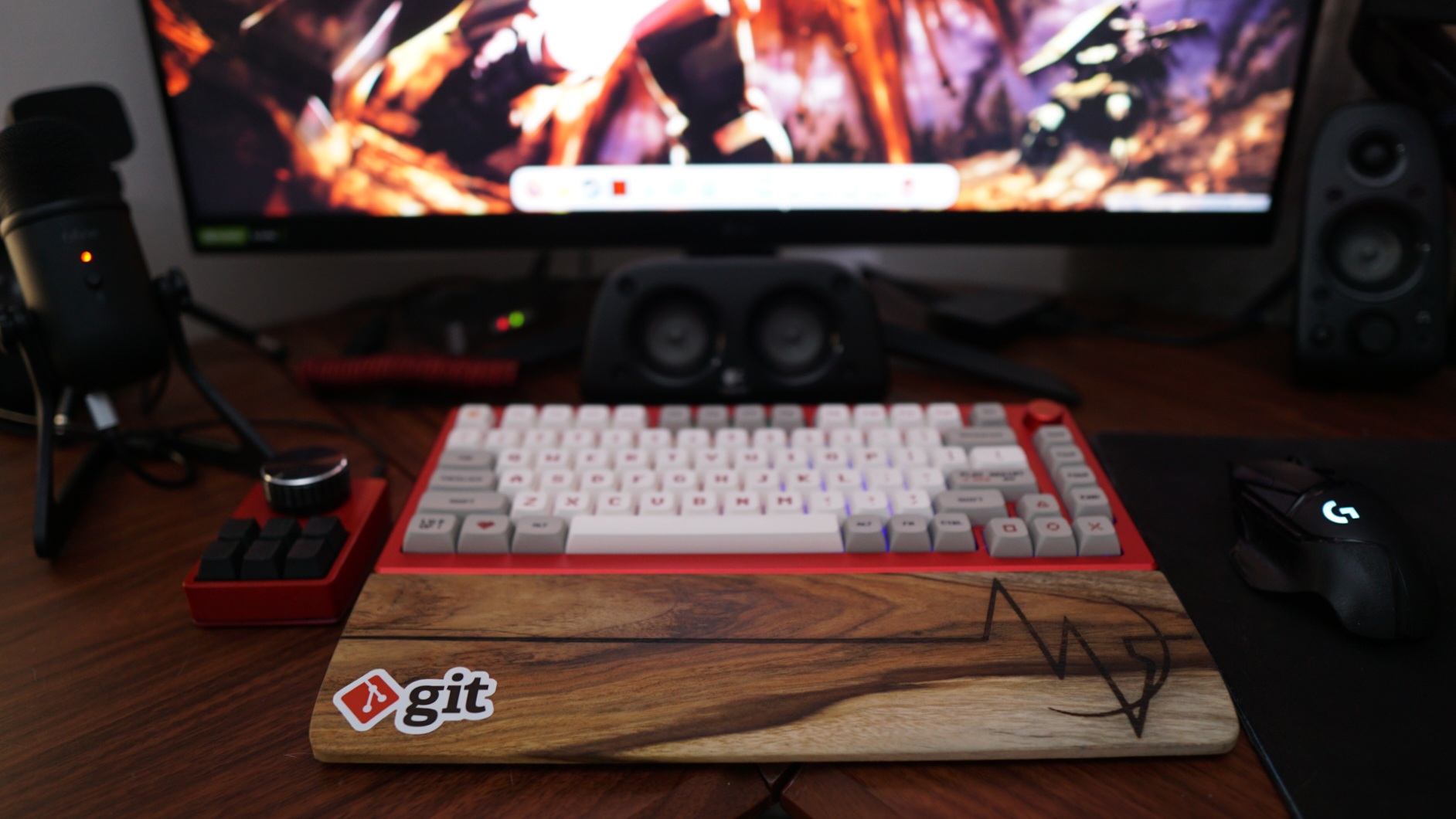Well well, I guess I really am in too deep.
Last year, Glorious pioneered the mass produced pre-packaged barebobe keyboard kit with their release of the mostly favorable reviewed GMMK Pro keyboard kit. The GMMK Pro provided a smartly priced gateway for normies such as I that cringed at thousands of USD priced groupbuy-fenced custom keyboard build, into the world of custom mechanical keyboard world. Having a fairly known maker added assurance too, since your.. uh.. investment is covered by warranty and support. A couple of months later, Keychron released their very own kit, the Keychron Q1. Lesser known keyboard makers then follow suit with a more efficient . Notable mentions are Keydous NJ80, which also adapted into the TH80 by Epomaker, and Feker IK75
So I didn’t get into the mass produced barebone scheme back then. I really want to, but the RK84 I was running was perfectly fine, not to mention I still have the original Keychron K2, and even K3 as backup. Zoom forward to the last 3 months, the RK84 was starting to act funny. Wireless connection would randomly drop, and even cable connection became unreliable. My Destiny 2’s Hunter would start moving backward uncontrollably in the middle of strike, which can only be remedied by restarting my PC.
Since my K2 is now at the office, I was stuck with nearly function-less keyboard at home, then it’s time for a new keyboard. I have a set of Gateron Milky Yellow, and this time, I would really like to have a keyboard with an aluminium case. This would of course mean I will be scarifying bluetooth and wireless connection. Fine, I’ll have my fancy wired only aluminium bodied mechanical keyboard permanently nested on my desk, and have the K3 to be the main wireless, mobile unit if I decide to work from my back porch
My option for an affordable, mass produced, pre-build keyboard kit with aluminium case that is available in local shop is pretty limited. There are Glorious’s GMMK Pro, Keychron Q1, or Akko MOD 007v2. All of them are gasket mounted. The MOD 007 v2 seems to be most complete package with choice of silicon or poron gaskets, and 2 type of plates. On the down side, unlike the former two, it does not support QMK/VIA, which for linux user, is quite unfortunate
The ultimate deciding factor for me to go with the Akko for me is that well, it’s the only one that comes in red 😀
What’s in the box
The MOD 007v2 comes disassembled in a fairly hefty box. The first layer of the box packs the default aluminium plate with the north facing hotswap PCB screwed in, sandwiching a thin layer of poron foam, with the newly added silicon gaskets installed on the plate. There’s a plastic bag containing a sets of screws for mounting the Type-C USB port into the case, and another sets for case screws. The second layer of the box contains the CNC milled outer shell, the aforementioned polycarbonate plate that you can use in place of the default aluminium one, a plastic sheet of the original poron gaskets, should you prefer them over the silicon ones, an optional thin poron switch pad, the rotary knob top, and a coiled USB type-c cable, as well as the bottom foam layer

Features
The only way you can connect the MOD 007v2 to your computer is through the Type-C port, located on top left of the case. It sports an exploded 75% layout, where the arrow keys clusters and the right side keys row are a little a part from the rest of the keys. The top right corner of the board houses a knob that functions either as a volume dial or, backlight brightness adjuster. Typical to a knob-equipped layout, the board is missing one button, either Delete or PrintScreen. Just like most Akko boards the MOD 007v2 has an onboard memory where setting configured through the Akko Cloud driver are stored, thus you don’t need Akko Cloud Driver to run in the background or You can plug your keyboard to a different computer and have your configuration with you.
Building

Building the MOD 007v2 is a quite straight forward process. I decided to go with the polycarbonate plate instead of the FR4 one. All I have to do is to dismount the PCB from the alu plate, move the stabilizers and the silicon gaskets to the polycarbonate plate, and then finally mount the PCB, the plate poron foam and the switch pad. The board was build initally using my Gateron Milky Yellow set of switches with the board, but have since replaced it with Akko’s own pre-lubed Lavender Purple CS switches.
In Summary

Clean and straight forward build, plenty of customization option out of the box, Akko MOD 007v2 is an excellent choice for those who would like to step up from prebuild mechanical keyboards, or perhaps even worthy for end game for someone that would like to get out of the ..err hobby, assuming he or she has USD200+ to spend on a keyboard. As a Linux user, I know at some point I’ll probably regret not picking a kit that supports VIA, but for know I am very happy with the result. Besides, Moki seems to really like it.
Verdict: 4/5
It’s red, it’s heavy, and very nice to type. Support for QMK/VIA would better, but the only thing that I can think of doing with VIA with this keyboard is mapping a key to PrintScreen. Akko just recently announced their sub-brand MonsGeek, and their first keyboard M1 is a 75% aluminium keyboard kit that will support QMK/VIA, but so far, no red colored model 🙁
